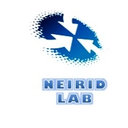Non-dioxin-like polychlorinated biphenyls (PCB 101, PCB 153 and PCB 180) induce chondrocyte cell death through multiple pathways.
Paraules clau
Resum
Environmental pollutants are known to have adverse effects on human health. However, the link between chemical exposure and osteoarthritis remains little investigated. This study sought to assess in vitro the effect of several non-dioxin-like polychlorinated biphenyls (NDL-PCBs) on chondrocytes viability and apoptosis induction. Murine chondrogenic ATDC-5 cell line and human T/C-28a2 immortalized chondrocytes were exposed to NDL-PCBs 101, 153 and 180. Cell viability was examined using MTT assay. Necrosis was evaluated by LDH assay. Expression of apoptotic related proteins, such as caspase-3, Bcl-2 and Bax was assessed by Western blot analysis. Finally, oxidative stress was evaluated by malondialdehyde (MDA) assay and the Oxidative Stress Index. In vitro exposure to NDL-PCBs caused strong reduction of cell viability in a concentration-dependent manner. Data from LDH assay showed cellular necrosis induction. Caspase-3 activation, as well as, altered Bcl2/Bax ratio and p38 MAP-kinase phosphorylation also suggested apoptosis induction. Finally, MDA levels and Oxidative Stress Index revealed that PCBs drive chondrocyte death via increase of oxidative stress. The viability of murine and human chondrocytes was reduced in presence of PCBs. The activity of PCBs on cell viability is likely to be mediated by complex alterations involving regulation mechanisms of apoptosis, necrosis and oxidative stress.




